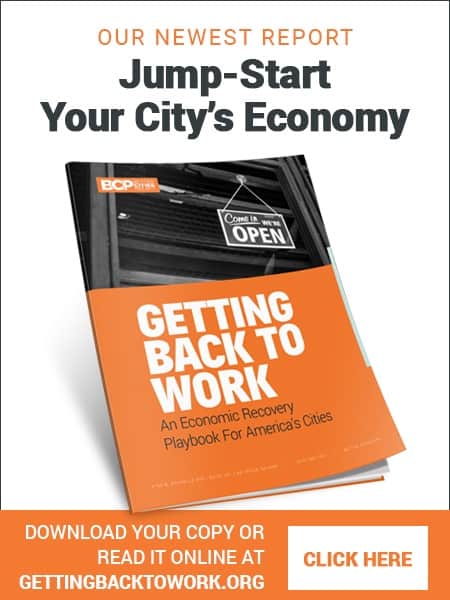Struggling or well-off, aspiring or declining, ask yourself: Does it have some bearing on your future?
For most people, the answer is yes. And, as it turns out, that’s the answer for most cities, too.
Suburban life promises predictability: safe streets, good schools and reliable trash pickup. For many, especially in Kansas City’s orbit, it’s a preferred alternative to the aging infrastructure and financial shortfalls common in urban cores. But as these suburbs grow, they inherit similar challenges — just on a delay. Their balance sheets today play a large part in their potential and possibilities tomorrow.
Are KC’s suburbs built for tomorrow? That’s a question best answered by examining their finances in full — not just the parts highlighted in budget summaries.
To do that, I turned to a methodology developed by Truth in Accounting or TIA, a Chicago-based nonprofit that has rated city finances for nine years. I previously covered its ratings of Kansas City and St. Louis: Both earned a D, primarily they’ve committed to paying retirement benefits to employees but have failed to set aside enough money to fund these obligations as they’re incurred.
But what about the smaller, newer cities just across State Line Road in Kansas? Are they truly in better financial shape? To find out, I applied TIA’s methodology to Lenexa, Olathe, Overland Park, Prairie Village and Kansas City, Kansas.
Cities’ report card grades
The model evaluates a full municipal balance sheet. It subtracts non-capital debt — such as unfunded pensions and retiree health benefits — from available assets. Capital assets and restricted funds are excluded, since they can’t pay regular bills.
The remaining balance is then divided by the number of taxpayers to find each resident’s share of the debt or surplus. The goal isn’t to alarm but to offer a more complete, honest accounting — something many official reports still lack.
Surpluses give cities a buffer, helping them avoid sudden tax increases, service cuts or deferred maintenance during downturns. Burdens, by contrast, may mean future pressure to raise taxes, delay infrastructure upgrades or underfund schools and pensions. These figures signal how well a city is positioned to weather fiscal challenges.
TIA uses that per-taxpayer figure to assign grades: Surpluses over $10,000 earn an A; $1 to $9,999, a B. Burdens from $0 to -$4,999 score a C; -$5,000 to -$20,000, a D; and worse than -$20,000 is failing.
For this analysis, I used annual reports from 2019–2023, plus records from the Kansas Public Employees Retirement System or KPERS, IRS ZIP code income tables and Other Post-Employment Benefits actuarial valuations.
- Lenexa scored highest, earning a B in each year. Its per-taxpayer surplus rose from $1,292 in 2019 to $1,869 in 2023.
- Olathe also held a B rating throughout, with surpluses tapering from over $1,200 in 2019 to $1,061 by 2023.
- Overland Park, the region’s largest suburb, posted a steady B as well, with its surplus climbing from $529 to $1,126.
- Prairie Village earned a consistent C, except in 2020 when it briefly improved to a B. By the end of 2023, its taxpayer burden was $434.
- The Unified Government of Wyandotte County/Kansas City, Kansas fared worst, earning a C each year. Still, its financial picture is improving: Its taxpayer burden fell from $3,470 in 2019 to $2,100 in 2023.
What the grades mean
Sheila Weinberg, founder and CEO of TIA, explained that while they can sometimes raise concerns about overtaxing, surpluses are safeguards against economic volatility and long-term financial risks. “Cities face exposure to market volatility and actuarial unpredictability through systems like KPERS and (The Kansas Police and Fireman’s Retirement System),” she explained. “A reasonable surplus isn’t just prudent — it’s necessary for long-term stability.”
Weinberg used KCK as an example, “Despite increasing annual contributions — 8.42% to KPERS and 22.36% to KP&F in 2023 — it is carrying its highest net pension liability in five years.”
Suburban strength isn’t just in strong schools or clean parks; it’s in resisting the urge to overpromise and overspend. Recent stories from Kansas about taxpayer subsidized development for wealthy corporations, lavishly compensated government staff and seemingly unnecessary public construction projects suggest that resistance is waning.
But for now, most of these Kansas suburbs are on stable footing. The challenge is staying there as growth pressures mount and political temptations grow.
Patrick Tuohey is co-founder of Better Cities Project, a 501(c)(3) nonprofit focused on municipal policy solutions, and a senior fellow at the Show-Me Institute, a 501(c)(3) nonprofit dedicated to Missouri state policy work.









Cities should stick to the basics of governing